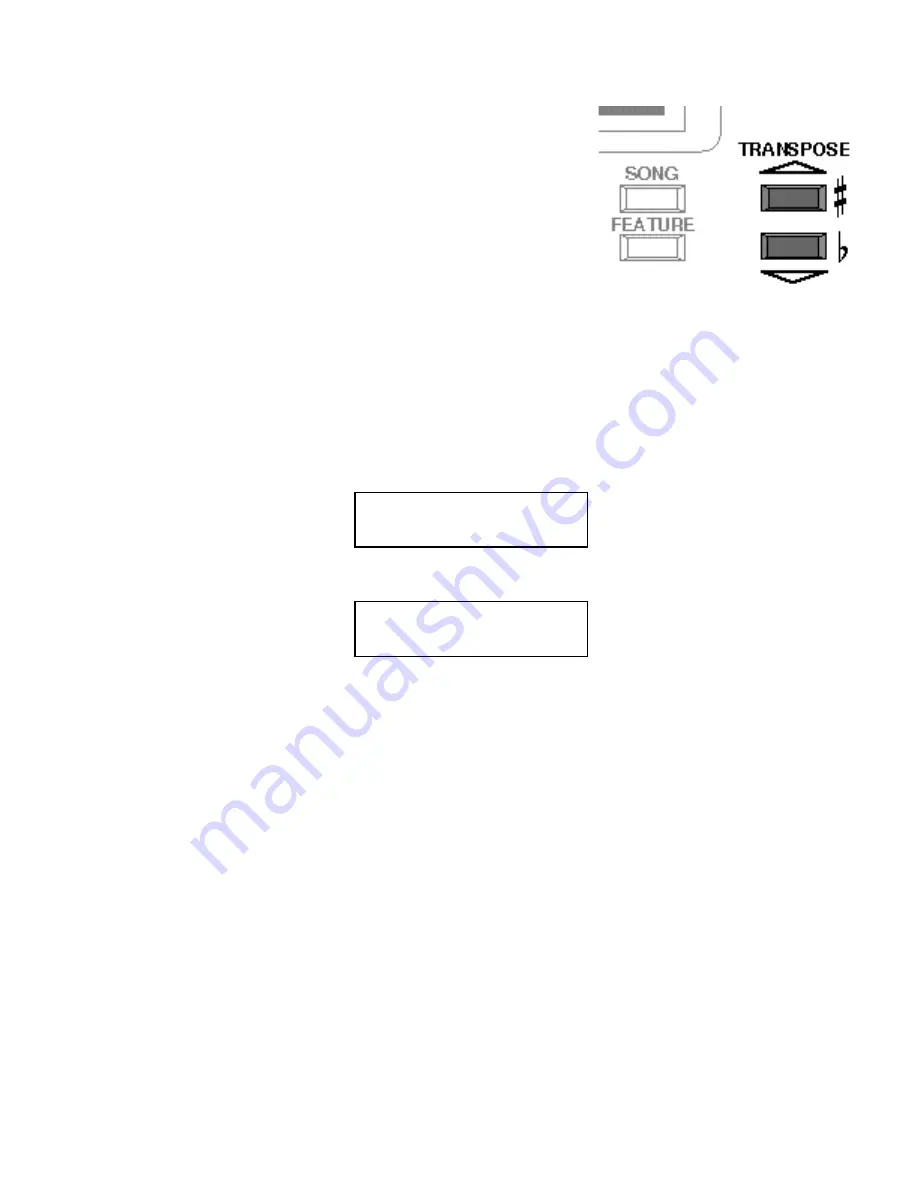
27
TRANSPOSE
What It Does:
At the touch of a button Transpose moves the sound, or pitch,
of the organ up or down.
How It Works:
With the Jubilee in the normal key of “C” - pressing the top
Transpose button (triangle pointing up) causes it to light up and
moves the sound of the organ up a musical half step each time
the button is pressed. Four half steps up are recognized: C#,
D, Eb, E.
With the Jubilee in the normal key of “C” - pressing the Bottom Transpose button (triangle point-
ing down) causes it to light up and moves the sound of the organ down a musical half step each
time the button is pressed. Four half steps down are recognized: B, Bb, A, Ab.
The upper right corner of the Information Center window displays the position of the TRANS-
POSE button. For example, if the organ is transposed to the key of Bb the Information Center
window displays...
When the organ is in the normal key of “C” neither Transpose button is illuminated and the
Information Center window does not display the position...
Turning the Jubilee on or pressing the Reset button causes the organ to be in the normal
key of “C”.
Try this example to hear how Transpose works. Watch the Information Center window.
1. Press the Reset button.
2. Play a “C” note on the upper keyboard.
3. Release the note and press the upper Transpose button one time.
4. Play the same “C” note on the upper keyboard again. The note is higher now.
How To Use It:
Playing a song in a different key is made easy with the Transpose feature.
Transpose is useful for sing-alongs or when your friends accompany your
organ playing with their own musical instruments.
A fun way to use Transpose is to play a song through once, press Transpose up one time and
then play the song over again.
TEMPO CHORD
123
N.C.
TEMPO CHORD Bb
123
N.C.






























